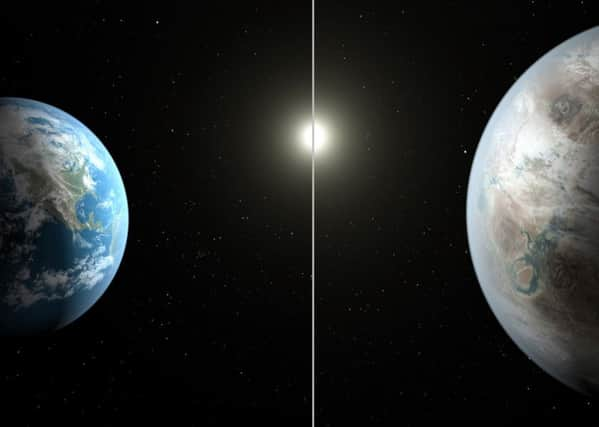Earth-like planet, Kepler-452b, found by Nasa


The Kepler 452b, or Earth Two is 1,400 light years away and is being deemed as a “bigger, older cousin” to Earth. It is the smallest planet found so far that lives within a “habitable” zone around a star similar to our own sun.
The planet is 60 per cent larger in diameter than Earth with an orbit is 385 days – compared to our own 365 days. Scientists believe that is more than enough time for life to have been established “somewhere on its surface, or in its oceans”.
Advertisement
Hide AdAdvertisement
Hide AdNo one knows if life has evolved on the planet. But since the parent star is 1.5 billion years older than the sun, scientists claim any creatures living there could be far more advanced than they are on Earth.
That makes Kepler-452b a good candidate for scientists involved in the Search for Extra Terrestrial Intelligence (Seti).
News of Kepler-452b’s discovery was released by astronomers operating Nasa’s Kepler space telescope.
Dr Jon Kenkins, from Nasa’s Ames Research Centre in Moffett Field, California, said: “We can think of Kepler-452b as an older, bigger cousin to Earth, providing an opportunity to understand and reflect upon Earth’s evolving environment.
“It’s awe-inspiring to consider that this planet has spent six billion years in the habitable zone of its star - longer than Earth.
“That’s substantial opportunity for life to arise, should all the necessary ingredients and conditions for life exist on this planet.”
The star system is located 1,400 light years away in the constellation of Cygnus, the Swan. Evidence suggests the new planet is rocky, like the Earth.
Ground-based observations from three US observatories confirmed that Kepler-452b was indeed a planet and helped to pin down its size and orbit.